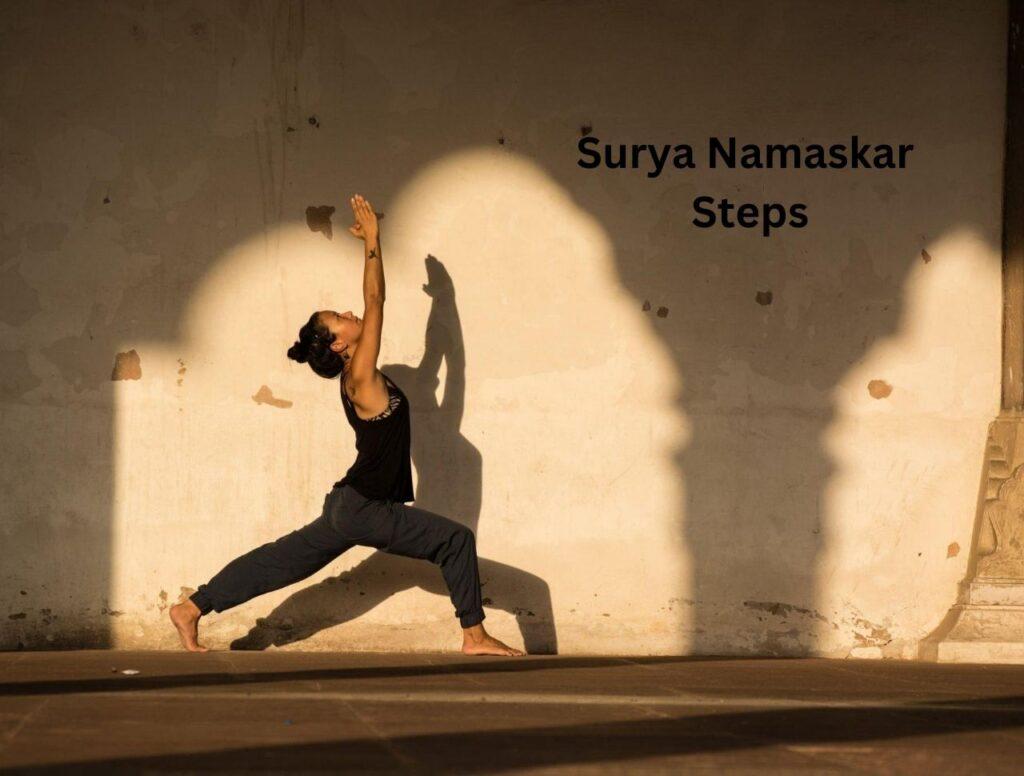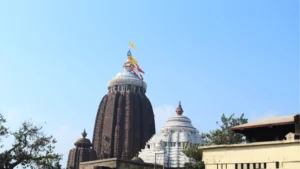Surya Namaskar, or Sun Salutation, is a sequence of 12 yoga postures that are performed in a continuous flow. It is a powerful practice that can energize your body, calm your mind, and improve your health. Surya Namaskar can be done at any time of the day, but it is especially beneficial to do it in the morning, as it can help you start your day with positivity and vitality.
Detailed breakdown of the 12 postures and their benefits of Surya Namaskar.
Pranamasana (Prayer Pose): Stand with your feet together and your spine straight. Bring your palms together in front of your chest and close your eyes. Breathe deeply and relax your body and mind. This pose helps you ground yourself and prepare for the practice.
Hastauttanasana (Raised Arms Pose): Inhale and raise your arms above your head. Stretch your body and arch your back slightly. Look up at your hands and smile. This pose stretches your spine and improves your flexibility.
Hasta Padasana (Hand to Foot Pose): Exhale and bend forward from your hips. Bring your hands down and touch your toes or the floor. Keep your knees straight and your head close to your legs. This pose improves your digestion and strengthens your legs.
Ashwa Sanchalanasana (Equestrian Pose): Inhale and step your right leg back as far as possible. Keep your left leg bent and your left foot flat on the floor. Place your hands on either side of your left foot and look up. This pose stretches your hip flexors and improves your balance.
Dandasana (Stick Pose): Exhale and step your left leg back to join your right leg. Keep your body in a straight line from head to heels. Press your palms firmly into the floor and engage your core muscles. This pose strengthens your arms and improves your posture.
Ashtanga Namaskara (Salute with Eight Parts or Points): Inhale and lower your knees, chest, and chin to the floor. Keep your hips raised and your elbows close to your body. Touch the floor with eight parts of your body: two feet, two knees, two hands, chest, and chin. This pose strengthens your arms, shoulders, and core.
Bhujangasana (Cobra Pose): Inhale and slide your chest forward and up. Lift your head and arch your back. Keep your elbows slightly bent and press your shoulders down. This pose strengthens your spine and improves your digestion.
Adho Mukha Svanasana (Downward-Facing Dog Pose): Exhale and lift your hips up and back. Push your heels down and straighten your legs. Keep your head between your arms and look at your navel. This pose stretches your entire body and relieves stress.
Ashwa Sanchalanasana (Equestrian Pose): Inhale and step your right foot forward between your hands. Keep your left leg straight and your left foot flat on the floor. Place your hands on either side of your right foot and look up. This pose stretches your hip flexors and improves your balance.
Hasta Padasana (Hand to Foot Pose): Exhale and step your left foot forward to join your right foot. Bring your hands down and touch your toes or the floor. Keep your knees straight and your head close to your legs. This pose improves your digestion and strengthens your legs.
Hastauttanasana (Raised Arms Pose): Inhale and raise your arms above your head. Stretch your body and arch your back slightly. Look up at your hands and smile. This pose stretches your spine and improves your flexibility.
Tadasana (Mountain Pose): Exhale and bring your palms together in front of your chest. Stand with your feet together and your spine straight. Breathe deeply and relax your body and mind. This pose helps you ground yourself and conclude the practice.
Surya Namaskar is a powerful and holistic way to start your day or to energize yourself at any time of the day. It can help you connect with your inner self, and with the universal energy that surrounds you. It can also help you prepare for other yoga poses, or for any other activity that you wish to do. Surya Namaskar is more than just a physical exercise; it is a spiritual practice that can transform your life.
Also, Practice: The Transformative Trio of Yoga, Meditation, and Reiki






